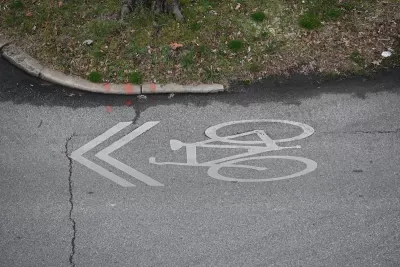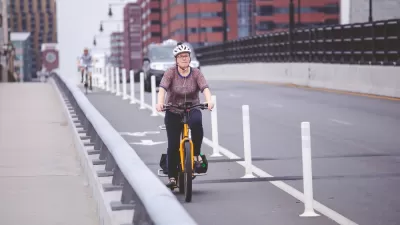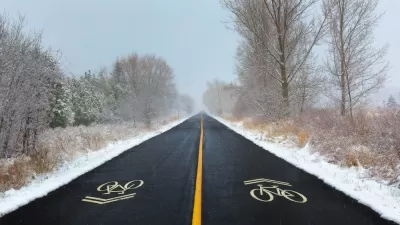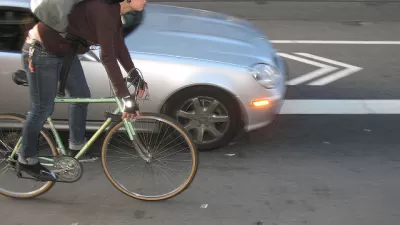Research shows there’s no substitute for protected bike lanes, and sharrows may make roads more dangerous for cyclists.

Once a positive step for bike infrastructure, sharrows — “those little bike-shaped icons painted onto roads that are supposed to indicate where cyclists should ride” — are falling out of favor and could actually endanger people on bikes.
According to an article in Momentum, “Studies have shown that sharrows don’t actually provide any real safety benefits for cyclists. In fact, they may even make things worse by encouraging drivers to pass cyclists too closely.”
Dave Snyder, senior director of People For Bikes and a formerly passionate advocate for sharrows, has admitted that they haven’t worked. “Today, we know so much more about what it takes to make our streets safer for bicycling. We need separate bike paths; we need protected bike lanes on busy roads; and where the lanes are shared, we need actual speeds reduced to 20 mph or slower.”
The article concludes that there’s no substitute for safe, physically protected bike lanes. “The best bicycle infrastructure for safe cycling is dedicated bike lanes that provide physical separation between cyclists and vehicles.
FULL STORY: Sharrows used to make sense in theory, but are now mostly useless and possibly dangerous

Rethinking Redlining
For decades we have blamed 100-year-old maps for the patterns of spatial racial inequity that persist in American cities today. An esteemed researcher says: we’ve got it all wrong.

Planetizen Federal Action Tracker
A weekly monitor of how Trump’s orders and actions are impacting planners and planning in America.

Walmart Announces Nationwide EV Charging Network
The company plans to install electric car chargers at most of its stores by 2030.

New State Study Suggests Homelessness Far Undercounted in New Mexico
An analysis of hospital visit records provided a more accurate count than the annual point-in-time count used by most agencies.

Michigan Bills Would Stiffen Penalties for Deadly Crashes
Proposed state legislation would close a ‘legal gap’ that lets drivers who kill get away with few repercussions.

Report: Bus Ridership Back to 86 Percent of Pre-Covid Levels
Transit ridership around the country was up by 85 percent in all modes in 2024.
Urban Design for Planners 1: Software Tools
This six-course series explores essential urban design concepts using open source software and equips planners with the tools they need to participate fully in the urban design process.
Planning for Universal Design
Learn the tools for implementing Universal Design in planning regulations.
City of Moorpark
City of Tustin
City of Camden Redevelopment Agency
City of Astoria
Transportation Research & Education Center (TREC) at Portland State University
Regional Transportation Commission of Southern Nevada
Toledo-Lucas County Plan Commissions





























